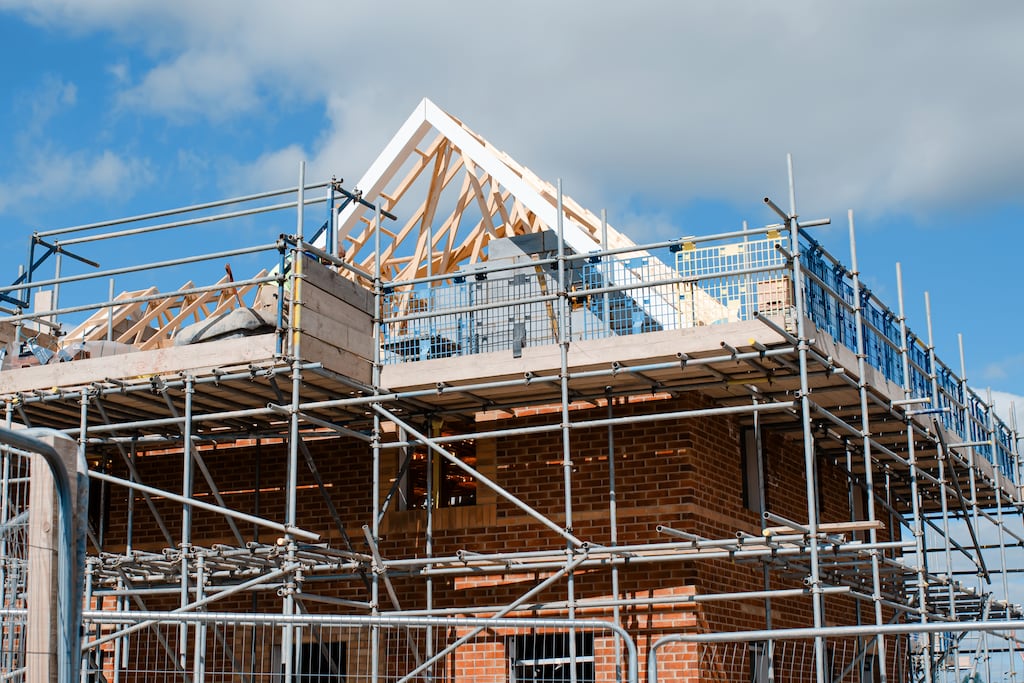Less than 12 per cent of new buildings in some counties are being inspected to see if they comply with regulations, the head of the Society of Chartered Surveyors Ireland (SCSI) has warned.
Setting out his stall as the society’s new president, Kevin Hollingsworth said Ireland’s approach to the enforcement of building regulations was totally inadequate and required “a cultural shift”.
His comments come as estimates for dealing with mica, pyrite and apartment defects are expected to exceed €5 billion.
Local authorities are required to inspect just 12-15 per cent of new buildings notified to them.
READ MORE
However, two local authorities – Mayo and Sligo – did not meet this low bar in 2022, inspecting 7 and 11 per cent of new builds respectively, while many others just reached the minimum target, according to the National Oversight and Audit Commission’s Local Authority Performance Indicator report.
In contrast, 80 per cent of new buildings were inspected in Dublin in 2022.
Mr Hollingsworth, who played a key role in highlighting the defects issue in Celtic Tiger era apartments, said local authorities “needed to view enforcement of building regulations as an essential service for future homeowners, not minimum targets which need to be achieved”.
He said tens of thousands of people all over the country are now grappling with the financial and emotional costs of legacy issues such as mica, pyrite and apartment defects.
“The Government’s estimate for dealing with the financial cost of the mica, pyrite and apartment defects issue is about €5 billion, made up of €250 million for pyrite, €2.2 billion for mica and €2.5 billion for apartment defects,” Mr Hollingsworth said.
“However, this should be viewed as a minimum figure with more recent media reports indicating a figure in excess of €7 billion to be more realistic,” he said.
In the context of these soaring costs “it was logical to dramatically scale up the numbers of building control regulation inspections”, he said, noting that local authorities in many cases were not sufficiently funded to carry out inspections.
Mr Hollingsworth said in 2023 local authorities spent just €20 million on enforcing building control regulations, a fraction of the sums now needed to pay for defects.
“If you subtract the €5 million they made from fees, the figure is just €15 million with €5.4 million of that being spent by Dublin City Council,” he said.
“Our members tell us that many local authorities view enforcement as a cost they have to shoulder and that there is no incentive for them to increase their level of inspections,” he said.
[ Dublin council ‘needs 100 inspectors’ to tackle rental overcrowdingOpens in new window ]
“Many of the issues encountered during inspections are localised and that is why it is so important to have a uniform system of inspections with consistent enforcement across the country. Enforcing these important regulations should not depend on the county you’re living in,” he said.
Mr Hollingsworth, a registered building surveyor, also warned that while many were highlighting the benefits of Modern Methods of Construction (MMC) in increasing housing output and reducing costs, these new methods required quality control measures.
MMC is an umbrella term for a range of new and innovative construction techniques but generally refers to construction that takes place in a factory setting rather than on site.
“However, MMC have to be carried out strictly in accordance with the manufacturer’s instructions. Our members have identified some serious quality control issues with regard to some MMC products including timber not being protected from the weather when it arrives on site and mould growing on bathroom pods,” he said.
- Sign up for Business push alerts and have the best news, analysis and comment delivered directly to your phone
- Join The Irish Times on WhatsApp and stay up to date
- Our Inside Business podcast is published weekly – Find the latest episode here













